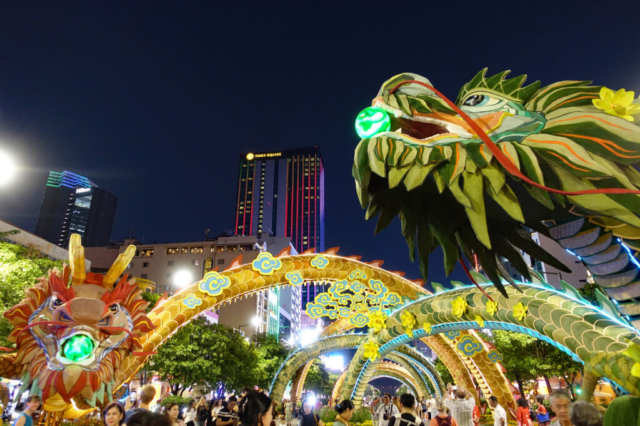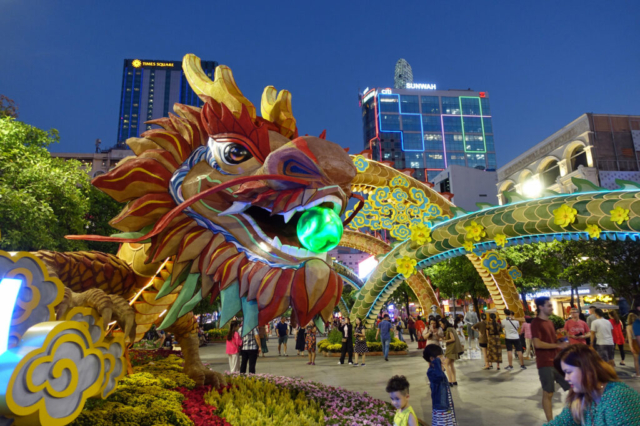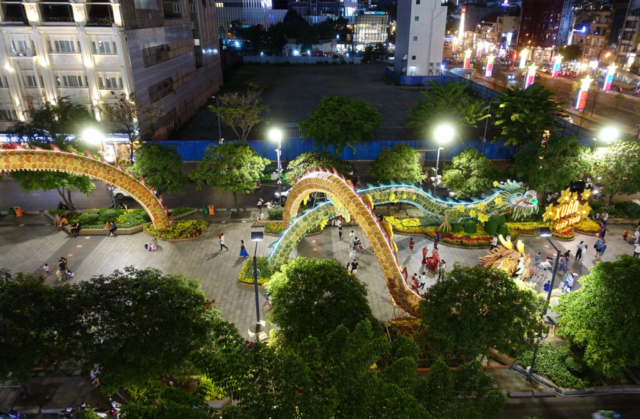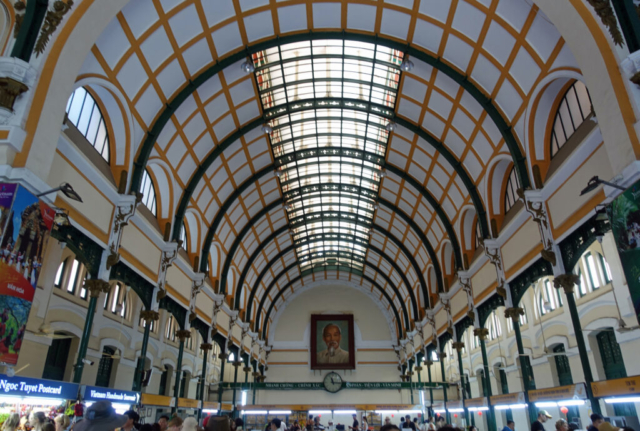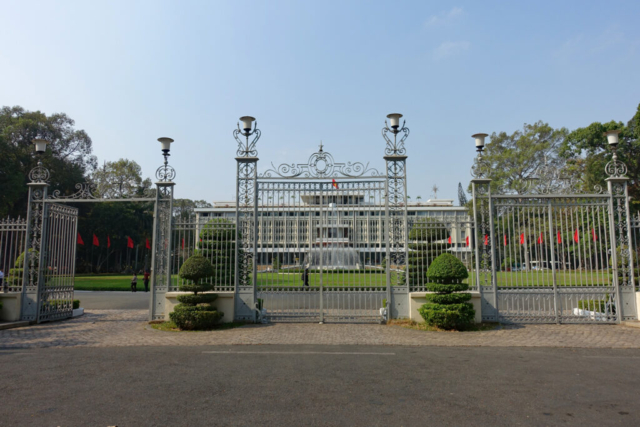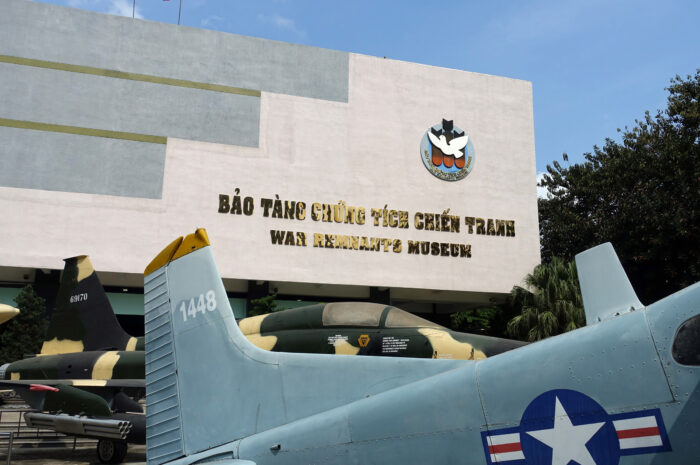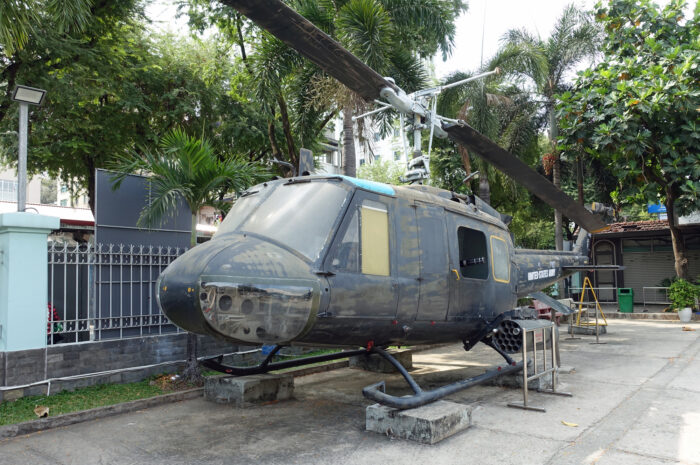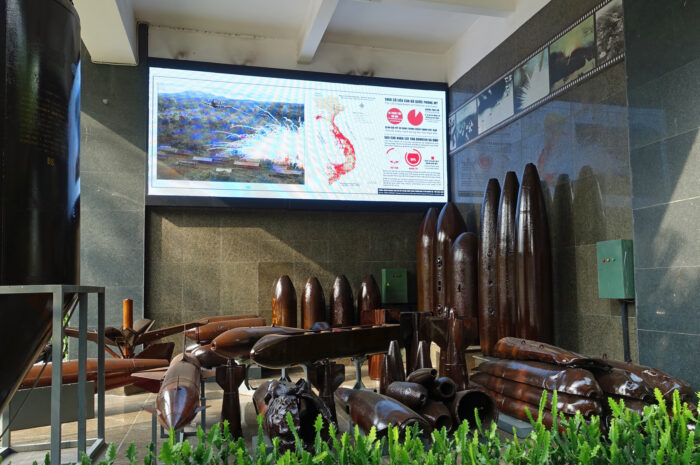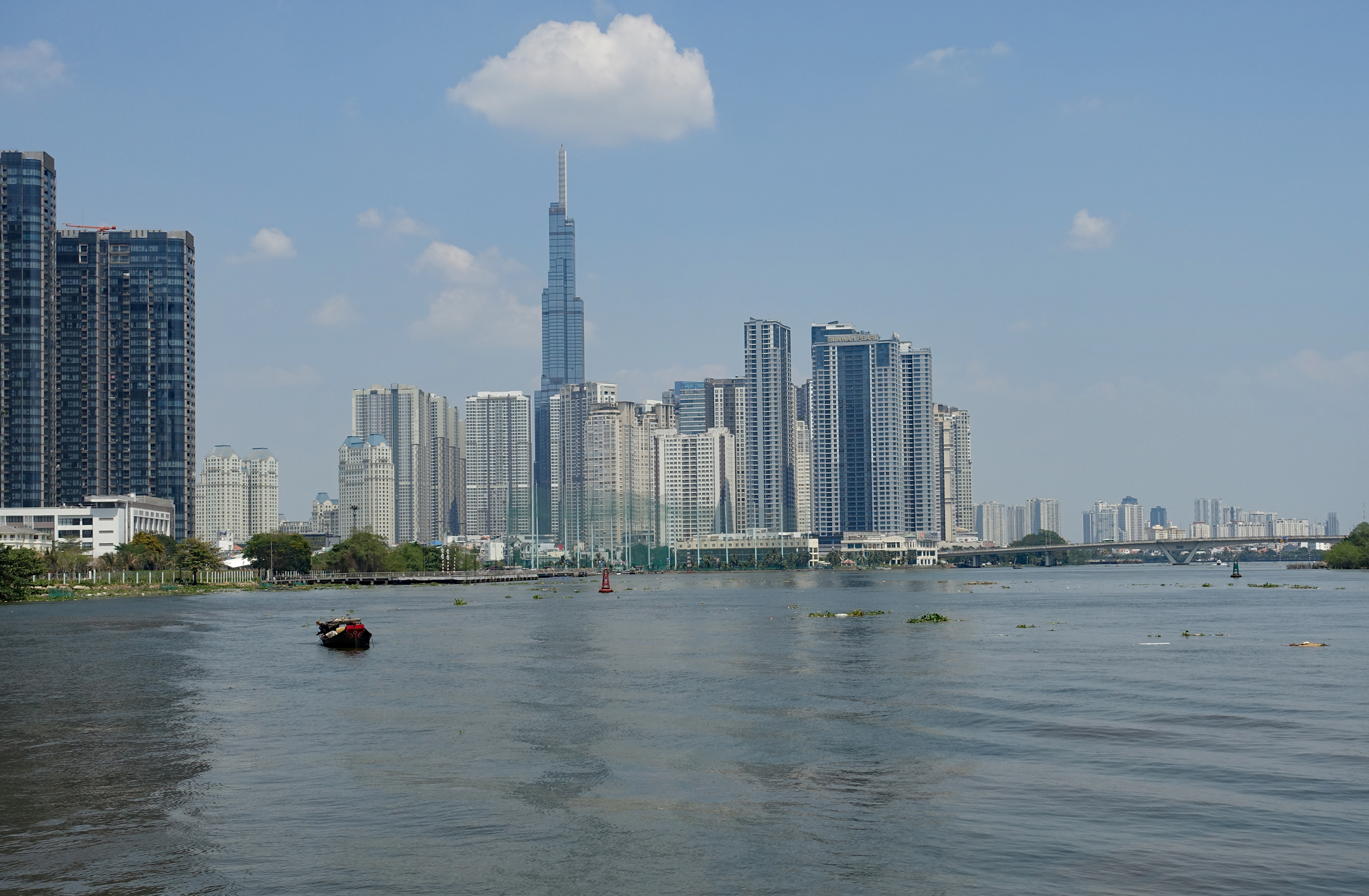
Vietnam’s history goes back thousands of years so I’ll try not to get bogged down in too many details. In 111 BC the Chinese invaded the region leading to 1,000 years of battles between various feudal Chinese dynasties. The Chinese were ousted in the 10th century and little changed until the French conquest in the 19th century. During the 1800’s when the French were busy colonizing this part of the world, Vietnam became part of French Indochina which included Laos and Cambodia. This created a semi-feudal colony for the next 100 years with the Vietnamese resisting French presence in their country. In 1930 the Communist Party of Vietnam was formed and in 1945 under the leadership of Ho Chi Minh they seized power of North Vietnam from the French creating the Democratic Republic of Vietnam, and dividing the country in two. This began a 30 year struggle for liberation and unification, including the time we know as the Vietnam War for 17 of those years. The Vietnam War was ostensibly a civil war between the communist north and pro-western south, yet the Vietnamese didn’t do all the fighting. The USA and many other countries intervened, propping up both sides with troops, weapons and supplies. Why did the USA do this?? They were afraid if communism took over in Vietnam it would spread to the surrounding countries, and so they began supporting south Vietnam’s anti-communist regime. What started as a small Vietnamese uprising turned into a major conflict with unfathomable devastation to the country and people. But the war was not limited to Vietnam, Cambodia and Laos were bombed relentlessly by the USA for allowing north Vietnamese soldiers into their countries and providing support. On April 30, 1975 Saigon fell to the Communist North Vietnamese army marking the end of the Vietnam war. Saigon was officially renamed Ho Chi Minh City, however south Vietnamese people still refer to ‘their city’ as Saigon. Vietnam was now unified under control of the Communist Party and in 1976 was renamed The Socialist Republic of Vietnam. In 1986 the Communist Party introduced a new program, doi moi, focused on economic reform and transitioning toward a market-oriented economy. Today Vietnam is firmly marching down the road to capitalism going from one of the poorest countries to one of the worlds fastest growing economies. The political situation remains a single party system, or as our Vietnamese guides have said ‘a single party democracy’ which sounds a bit contradictory to me.
After cruising down the Mekong River from Cambodia to Vietnam we disembarked our river cruise boat at My Tho Pier, then it was an easy 2 hour bus ride through the Vietnamese countryside into Saigon/Ho Chi Minh City(or HCMC). Saigon/HCMC is the largest city in Vietnam with a population of over 10 million residents, and I swear at least as many scooters!!! Crossing the street here is a leap of faith, you see a small gap, you start crossing and you don’t stop, trusting the scooters will go around you. Which they did 👍

After checking into our hotel the first order of business was getting a Vietnam SIM card. We ended up buying a 30-day plan with Viettel which can be renewed monthly for as long as we plan to be in the country. The cost for a SIM card and 30 day plan with 5G of data per day and unlimited local calls cost 290,000 VND (USD $11.80) Once that task was taken care of we met up with fellow nomads Kevin & Ruth for an afternoon beer and then again for drinks and dinner. This is the third city in SE Asia we have all been in at the same time and it’s been fun to spend time together in various places.

We met Kevin & Ruth again the next morning to take a hop-on hop-off bus tour. The loop was rather small, not going far from our hotels but it gave us some ideas of where to go later. A 4-hour ticket cost 299,000 VND each (USD $12.20) Some sights we found interesting and returned to were:
- The Municipal Theatre of Ho Chi Minh City or Saigon Opera House, completed in 1900 during French colonization in Vietnam, is a magnificent example of French Colonial architecture. The opera house offers a variety of shows, the most popular being the AO show, a storytelling circus about Vietnamese life. The Opera House is a popular spot for wedding photos with the gorgeous building as a backdrop.
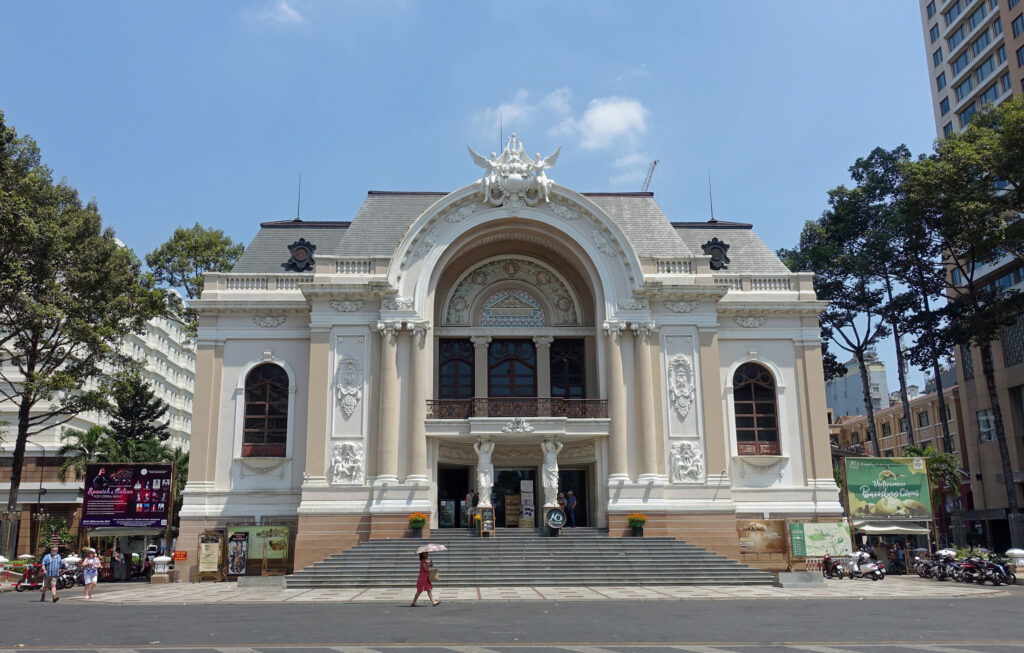
- Less than 100 meters from the Opera House is the Nguyen Hue walking promenade that runs for a few blocks all the way to the river. The promenade is considered the heart of the city attracting tourists, buskers, souvenir sellers and locals out for a walk. Because we are here at the end of the Chinese Lunar New Year celebrations there were a couple of very impressive mechanical dragons on the promenade welcoming the Year of The Dragon.
- Walking the other direction from the Opera House is the Saigon People’s Committee Building in front of which stands a 7.2m high statue of President Ho Chi Minh, unveiled in 2015.
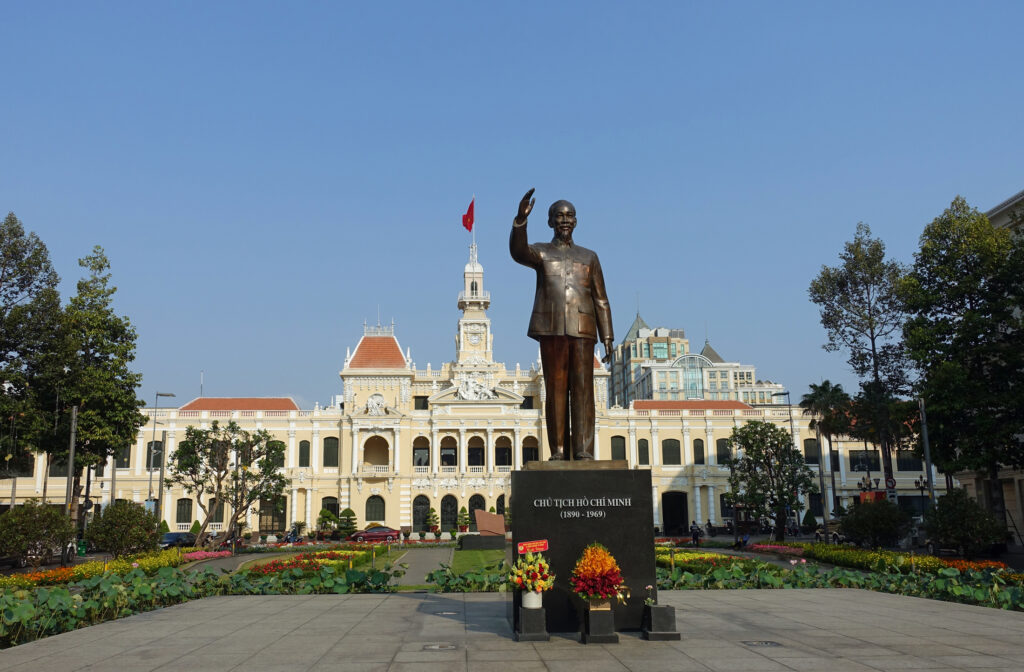
- Overlooking the walking promenade is the Nguyen Hue apartment building, an old apartment building with peeling wall paint that has become a famous sightseeing destination. The apartment building contains a variety of uniquely decorated cafes and restaurants providing visitors with perfect photo ops.

- The Saigon Central Post Office is one of the oldest buildings in the city. Built around 1886-1891 it is a typical French Colonial style building that still functions today as the central post office for the city.
- Near our hotel was Independence Palace, the site of the Fall of Saigon where a north Vietnamese Army tank crashed through it’s gates on April 30, 1975 effectively ending the Vietnam War.
To better understand the US invasion of Vietnam we visited the War Remnants Museum, a no holds barred account of the war from the Vietnamese point of view. The museum was founded on September 4, 1975 to conserve and display exhibits from the Vietnam War, or as it is called here the American War. Like our Killing Fields and S21 Prison visits in Cambodia, this museum is a deeply moving reminder of the horrors inflicted on the local people. The images are graphic, the video clips horrific and the accounts of those who experienced it harrowing to read. Many of the atrocities documented here are already well publicized, but it’s rare to visit a museum where the victims of US military action tell their side of the story. The museum has hundreds of photographs displaying the devastating effects of napalm bombs and Agent Orange on the Vietnamese people, and subsequent generations. Agent Orange was sprayed over huge swaths of the countryside to kill all the vegetation where north Vietnamese were hiding, resulting in the deaths of thousands of innocent people. While most of the displays are written from a Vietnamese perspective, much of the disturbing photography of war atrocities came from US sources, including the images of the My Lai massacre, where more than 500 unarmed south Vietnamese civilians were brutally killed by US soldiers. The Vietnam War has a long and complicated history which I will not go into, but we found the museum tour very useful to understand the Vietnamese point of view regarding the war. To be fair, the Americans were not the only ones inflicting horrors upon the Vietnamese people, they also did it to each other as the Communist north invaded the south, killing and ‘converting’ the southern population in their effort to take over/unite the entire country under Communism. It was a sad morning, but once again we have learned from the experience, gaining insight into a defining chapter in the country’s history and a deeper understanding of present-day Vietnam. Tickets to the museum cost 40,000 VND (USD $1.63) each.
Restaurants are prolific in Saigon/HCMC and range from simple street vendors to upscale establishments. Some of our favorite places near our hotel were Pasteur Street Craft Beer (one of our faves), Sol Kitchen and Bar, Terraviva Pizza & Italian and for amazing street food the Ben Thanh Street Food Market. Finding good food in this city is not hard to do!!
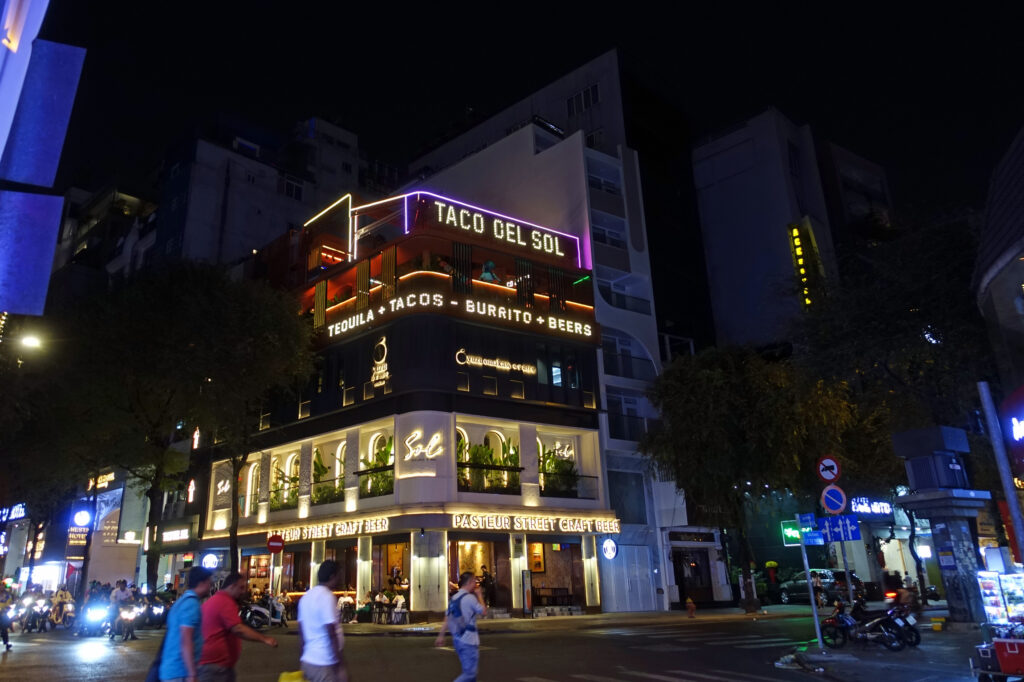
Like many SE Asian countries land is expensive for the locals so the easiest place to gain real estate is to go up!! I love all the narrow buildings we have been seeing.
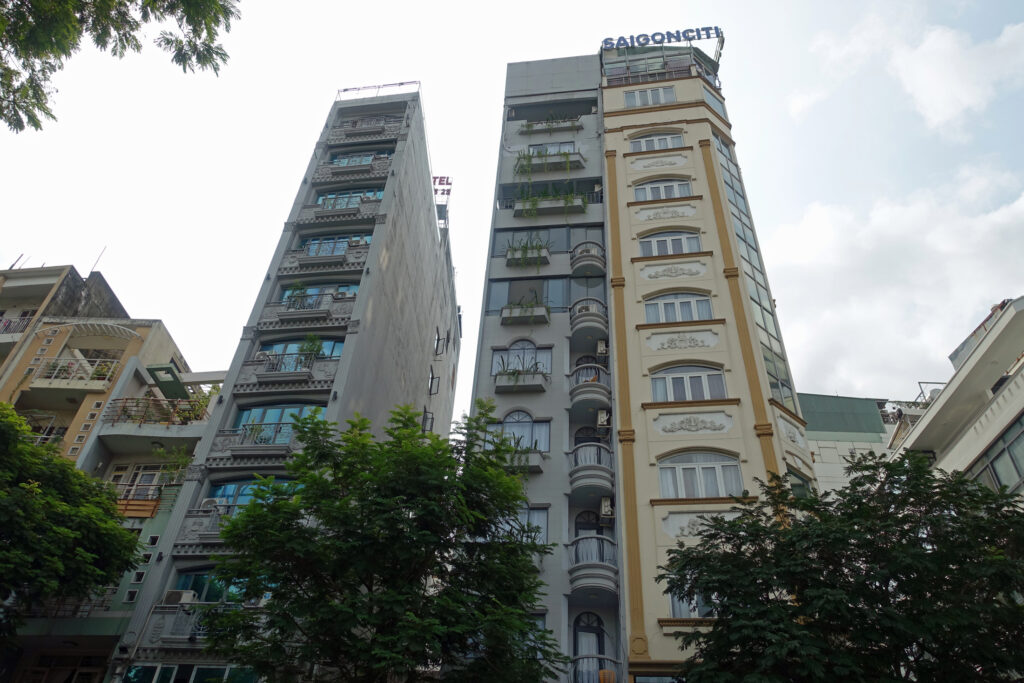
Vietnam’s visa rules changed last year, they went from a maximum 30 day visa that could be renewed by leaving and re-entering the country the same day, to a maximum 90 day e-visa. The new visa introduced in August 2023 can only be applied for online and you must be out of the country when you apply, so no more one day border runs for people renewing their 30 day visas. According to the government website the new e-visa takes from 3 to 5 business days to process. We applied and paid for our visas on January 9 and received them on January 12, well ahead of our planned February 14 arrival in Vietnam. Since our travel dates for Vietnam were not nailed down when we applied for our visas we requested a 90 day single entry visa, good until May 12, giving us flexibility in our travel planning. Our single entry 90 day visa cost USD $25 each and visas can be applied for here.
After our disappointment with Phnom Penh, we were surprised how much we enjoyed our 4 days here in Saigon/HCMC, although we undoubtedly just scratched the surface of things to see and do. But we are off, flying to the smaller seaside city of Da Nang…..
